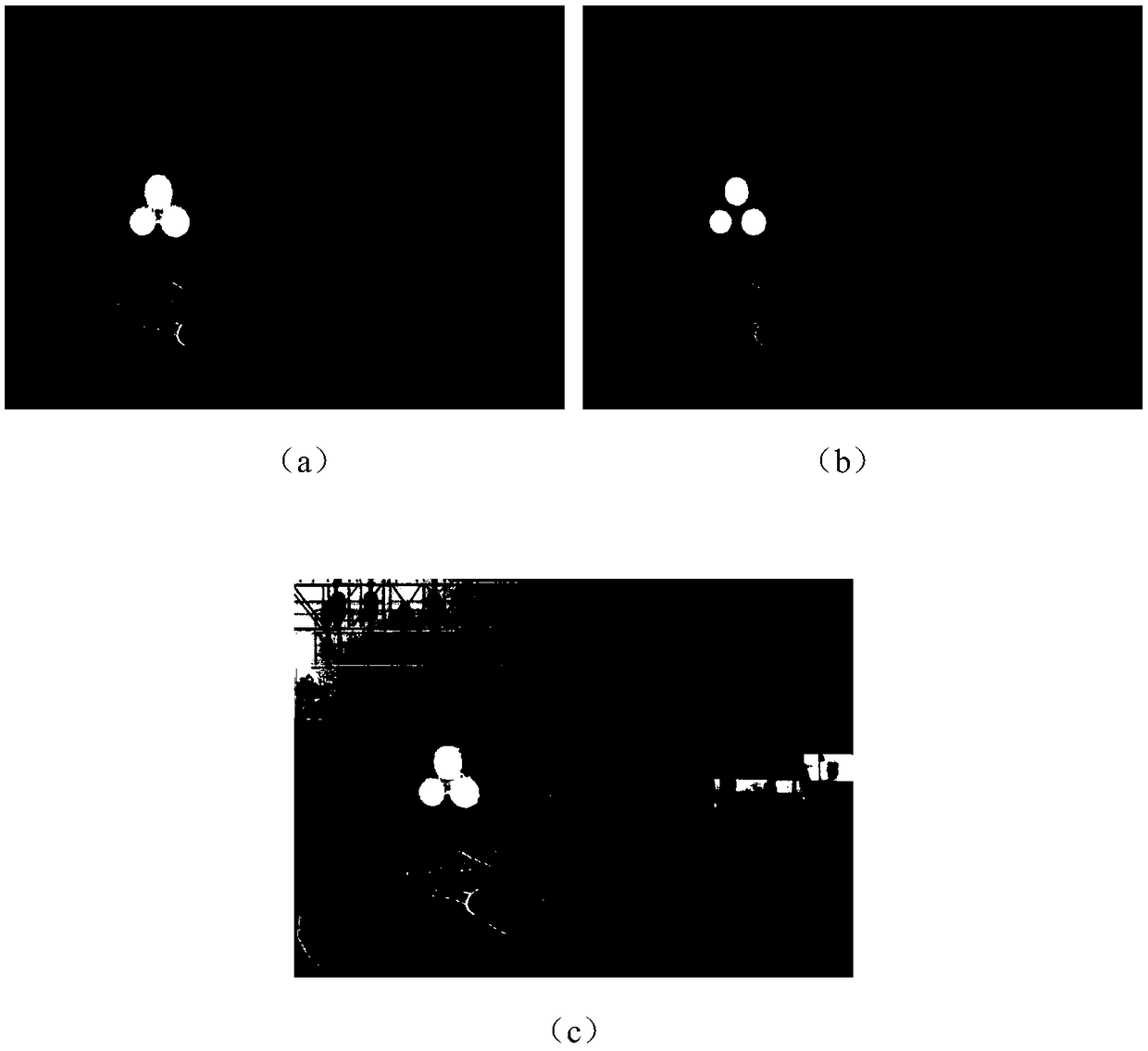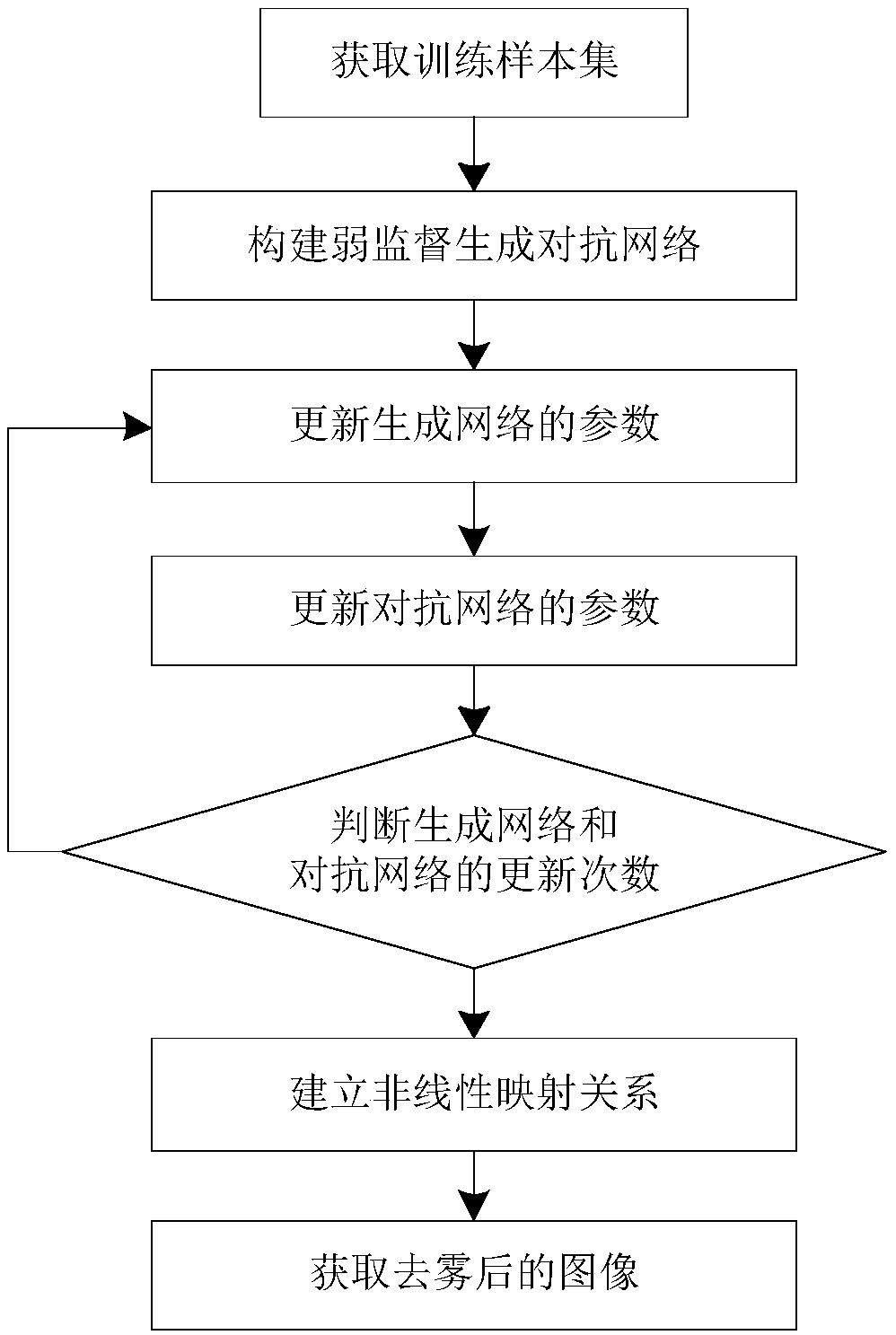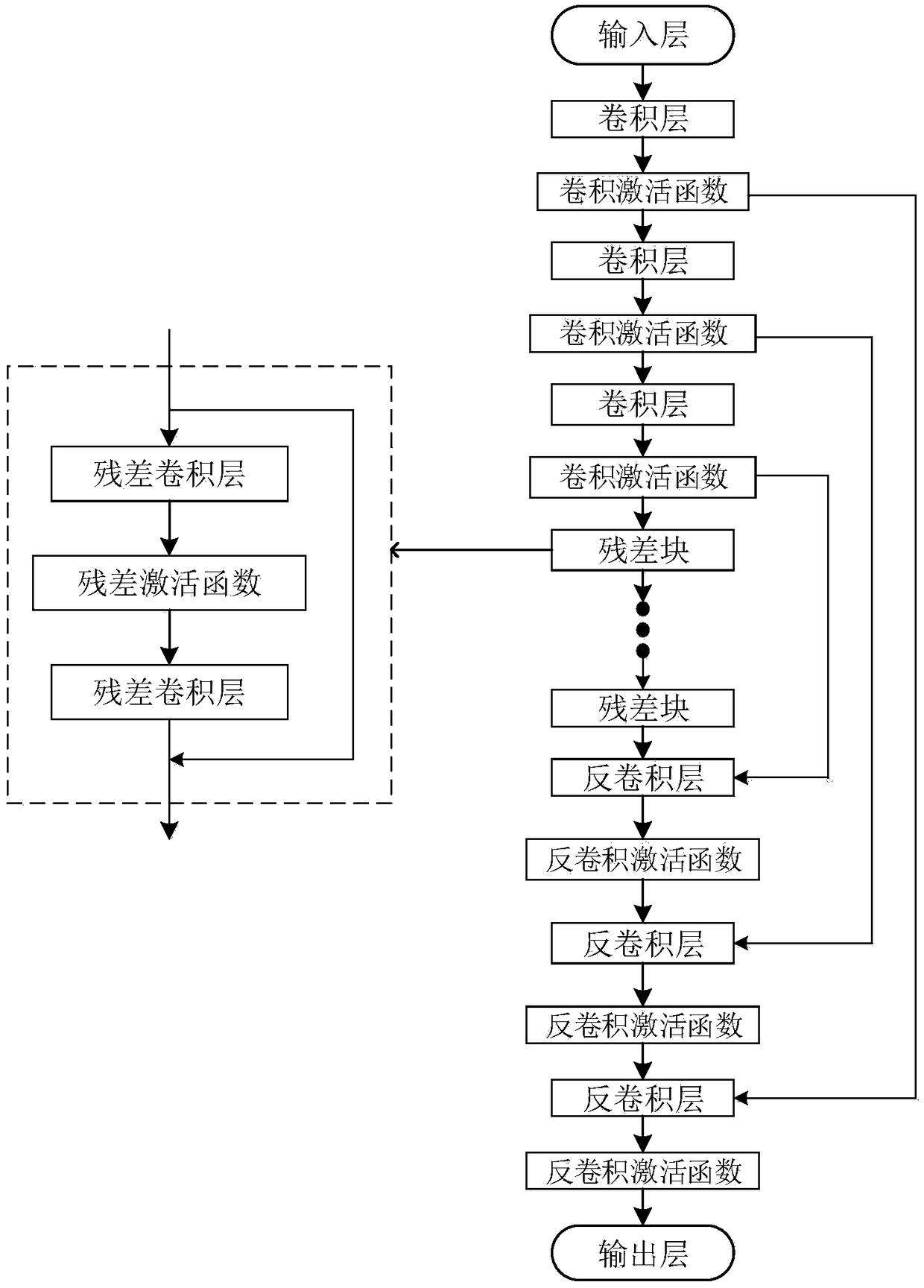Image defogging method based on weak supervision generation antagonism network
A weakly supervised, network technology, applied in the field of image processing, can solve the problems of unsatisfactory visual effects, insufficient contrast and clarity, and low image brightness, so as to overcome the limitations of artificially synthesized foggy images, avoid unnatural colors and Brightness is too low, the effect of improving the visual effect
- Summary
- Abstract
- Description
- Claims
- Application Information
AI Technical Summary
Problems solved by technology
Method used
Image
Examples
Embodiment Construction
[0041] The embodiments and effects of the present invention will be further described in detail below in conjunction with the accompanying drawings.
[0042] refer to figure 1 , the implementation steps of the present invention are as follows:
[0043] Step 1, obtain the training sample set.
[0044] (1a) Randomly select 4000 real foggy images of size 256×256 from the database as the real input training sample set
[0045] (1b) Randomly take 4000 clear images of 256×256 size from the database as the output training sample set And take out and output the training sample set Corresponding depth map sample set
[0046] (1c) Output training sample set based on atmospheric scattering model Randomly add fog to obtain a synthetic input training sample set
[0047]
[0048] Among them, A represents the atmospheric light coefficient, which is randomly selected from the range of [0.7, 1.0], and β represents the atmospheric scattering coefficient, which is randomly sele...
PUM
 Login to View More
Login to View More Abstract
Description
Claims
Application Information
 Login to View More
Login to View More - R&D
- Intellectual Property
- Life Sciences
- Materials
- Tech Scout
- Unparalleled Data Quality
- Higher Quality Content
- 60% Fewer Hallucinations
Browse by: Latest US Patents, China's latest patents, Technical Efficacy Thesaurus, Application Domain, Technology Topic, Popular Technical Reports.
© 2025 PatSnap. All rights reserved.Legal|Privacy policy|Modern Slavery Act Transparency Statement|Sitemap|About US| Contact US: help@patsnap.com



